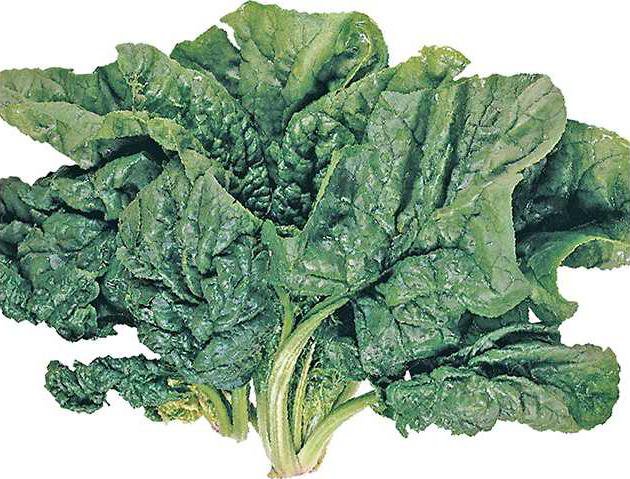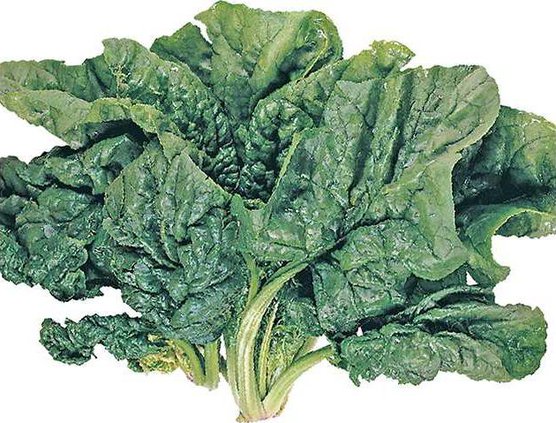Maybe Popeye had it right the whole time.
The iconic cartoon character always reached for his can of spinach to gain a quick burst of power and strength he needed to defeat Bluto and defend his girl, Olive Oyl.
This dark-green leafy vegetable is nutritionally rich in minerals such as choline, calcium, iron, magnesium, phosphorus, potassium, sodium, zinc, copper, manganese and selenium.
Spinach also contains healthy doses of vitamins A, C, K and E, as well as B6, and is high in dietary fiber.
All of these nutrients make up flavonoids and carotenoids, which are phytonutrients — substances found in certain plants that are believed to be beneficial to human health and help prevent various diseases.
Research has found that two carotenoids that are especially plentiful in spinach — lutein and zeaxanthin — are primary antioxidants in several regions of the eye.
The American Journal of Clinical Nutrition published a study of carotenoid and vitamin A intakes and risk of cataract extractions in U.S. women. The study showed that increasing the frequency of intake of certain foods — including leafy, green spinach and kale — was associated with a moderate decrease in the risk of developing cataracts.
The study was conducted over a period of 12 years with a total of 77,466 participants, all women between the ages of 45 and 71.
According to the George Mateljan Foundation for the World’s Healthiest Foods’ website, whfoods.com, spinach is the top of its vegetable list because of its nutrient richness.
The website reports that spinach has anti-inflammatory, antioxidant and anti-cancer benefits.
The American Institute for Cancer Research reported that its researchers believe that carotenoids seem to prevent cancer by acting as antioxidants — that is, scouring potentially dangerous “free radicals” from the body before they can do harm. Some laboratory research has found that the carotenoids in dark green leafy vegetables can inhibit the growth of certain types of breast cancer cells, skin cancer cells, lung cancer and stomach cancer.
Medical News Today reports that spinach contains an antioxidant known as alpha-lipoic acid, which has been shown to lower glucose levels, increase insulin sensitivity and prevent oxidative stress-induced changes in patients with diabetes.
Medical News also reports that spinach helps prevent asthma, lower blood pressure, is good for bone health, promotes healthy skin and hair and promotes regularity.
The serving size for dark-green leafy vegetables depends on whether you are eating them cooked or raw. When eating them raw, one serving is a cup, while one serving cooked is a half cup. This is because the volume of these vegetables decreases when they are cooked.
One cup of raw spinach has only seven calories, yet contains 56 percent of the daily value for vitamin A, 14 percent for vitamin C, 3 percent for vitamin E, 181 percent for vitamin K, 3 percent for vitamin B6 and 15 percent for folate. These daily-value percentages are based on a 2,000-calorie diet.
Several nutritionists recommend that spinach be consumed cooked for better absorption of iron, calcium and magnesium.
Leslie Beck, a health expert with The Globe and Mail of Toronto, said cooking certain vegetables, including spinach, can actually boost their antioxidant content. She reported that heating vegetables releases antioxidants by breaking down cell walls.
Studies have found that eating cooked spinach and carrots — versus raw — results in much higher blood levels of beta-carotene, an antioxidant thought to guard against heart disease and lung cancer, she said.
She said cooked spinach helps the body absorb more lutein, the phytochemical that helps prevent cataracts and macular degeneration.
Onegreenplanet.org reported that boiling spinach for just one minute maximizes the health benefits. Leaving the spinach to boil longer will eventually lead to a loss of nutrients. One minute is sufficient. If eating hot spinach is not your thing, just toss the quickly boiled spinach into ice. This blanching process stops the cooking and allows the spinach to stay dark in color and retain its flavor.
Onegreenplanet.org added that adding spinach to stir fry is another method of heating the vegetable to enhance nutrient intake.
Beck reported that steaming is a better alternative to boiling your spinach.
“Steaming is much gentler on nutrients because vegetables don’t come in contact with cooking water,” she wrote in a story published in 2014 for the Globe and Mail. “Dry cooking methods like grilling, roasting, stir-frying and microwave cooking without water also preserve a greater amount of nutrients than boiling or pressure cooking.”
Vegetarian Times reports that there are several benefits to consuming raw spinach as well. Some of the many essential nutrients more available to the body when spinach is eaten raw are folate, niacin, vitamin C, riboflavin and potassium.
Vegetarian Times also reports that both raw and cooked spinach are excellent sources of iron, containing twice as much as other leafy greens. A 100-gram serving of raw spinach contains 2.71 milligrams of iron, whereas cooked spinach contains 3.57 milligrams. The reports state that iron absorption is influenced by how much iron already is in the body and by other nutrients eaten in meals. So the amount of iron absorbed will vary regardless of whether spinach is cooked.
Strong to the finish
Benefits of spinach go beyong muscles


Sign up for our e-newsletters